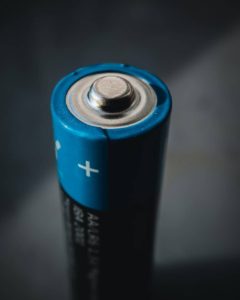Cadmium
Cadmium is an element found naturally in the earth’s crust. In fact, most soil, rocks, coal, and mineral-based fertilizers contain at least some cadmium. However, it’s usually combined with other elements like water, chlorine, or sulfur. Most of the cadmium the USA uses is extracted from zinc, lead, and copper.
Cadmium is a soft silver-white metal, tinged with blue. It’s possible to encounter it as a solid (Cd) or in gas cadmium fumes (CdO). Although toxic to human health, cadmium can be safely handled and disposed of by R2 Recycling-certified e-waste specialists like Newtech Recycling.
What Products Contain Cadmium?
Some items that are commonly made using cadmium include:
- Nickel-cadmium and solar batteries
- Pigments
- Paint
- Metal coatings and plating
- Plastics and plastic stabilizers
- Transportation equipment
- Welding materials
- Telephone and electric cables
- Cigarette smoke
How Does Cadmium Affect Health?
The CDC rates cadmium as a toxic substance. Humans normally take cadmium into their body through eating it or breathing it rather than through the skin. People are most often exposed to cadmium through breathing cigarette smoke and in workplaces that use, generate, or recycle cadmium.
Breathing in too much cadmium can cause lung damage or even death. Even exposure to low levels of cadmium over time in air, food, water, work environments, and cigarette smoke can result in kidney disease and bone fragility. Cadmium is highly carcinogenic, with links to lung cancer.
How Can You Protect Yourself from Cadmium Exposure?
The most effective way to protect yourself from cadmium exposure is to remove the cadmium from your environment. If that’s not an option, personal protective equipment can help limit exposure by keeping cadmium dust off clothing, skin, hair, and tools to prevent bringing it home from work.
Avoiding tobacco smoke is another way to limit your exposure to cadmium. You should also properly dispose of nickel-cadmium batteries, never allowing children to touch or play with them.

Cadmium in the Environment
Cadmium can enter our environment through air, soil, or water:
- Air: If cadmium ends up in regular landfill trash, it can release into the air if it’s burned or incinerated. Wind can transport cadmium particles over land and water.
- Soil: Cadmium usually binds to organic matter in soil, and remains immobile unless plant life absorbs it. This, in turn, introduces it into the food supply.
- Water: Soluble cadmium migrates in water, while insoluble forms deposit and absorb into sediments. The ocean can transport soluble cadmium over long distances.
How to Dispose of Cadmium Properly
It is necessary to ensure cadmium receives proper disposal so that it doesn’t disperse into the environment. Thus, it’s vital that you don’t take it to a facility that burns or incinerates its waste. Instead, you should take it to a responsible e-waste recycling center like Newtech Recycling.
If you need to dispose of an item that contains cadmium, you should follow these steps:
- Place the cadmium product into a box.
- Label the box as containing cadmium.
- Arrange for Newtech Recycling to pick up your cadmium for disposal.
If you have more than 100 kg/mo of cadmium for disposal, it’s necessary to conform with USEPA regulations 40 CFR 240-280, 300-306, and 700-799 for cadmium storage, transportation, treatment, and disposal.
Fortunately, you don’t have to parse through these regulations yourself. Instead, contact the hazardous waste disposal professionals at Newtech Recycling to take care of your cadmium disposal for you.
If you are located in our service area, call Newtech Recycling today. We can help you safely and efficiently dispose of old batteries, cables, and other electronics containing the element cadmium.

